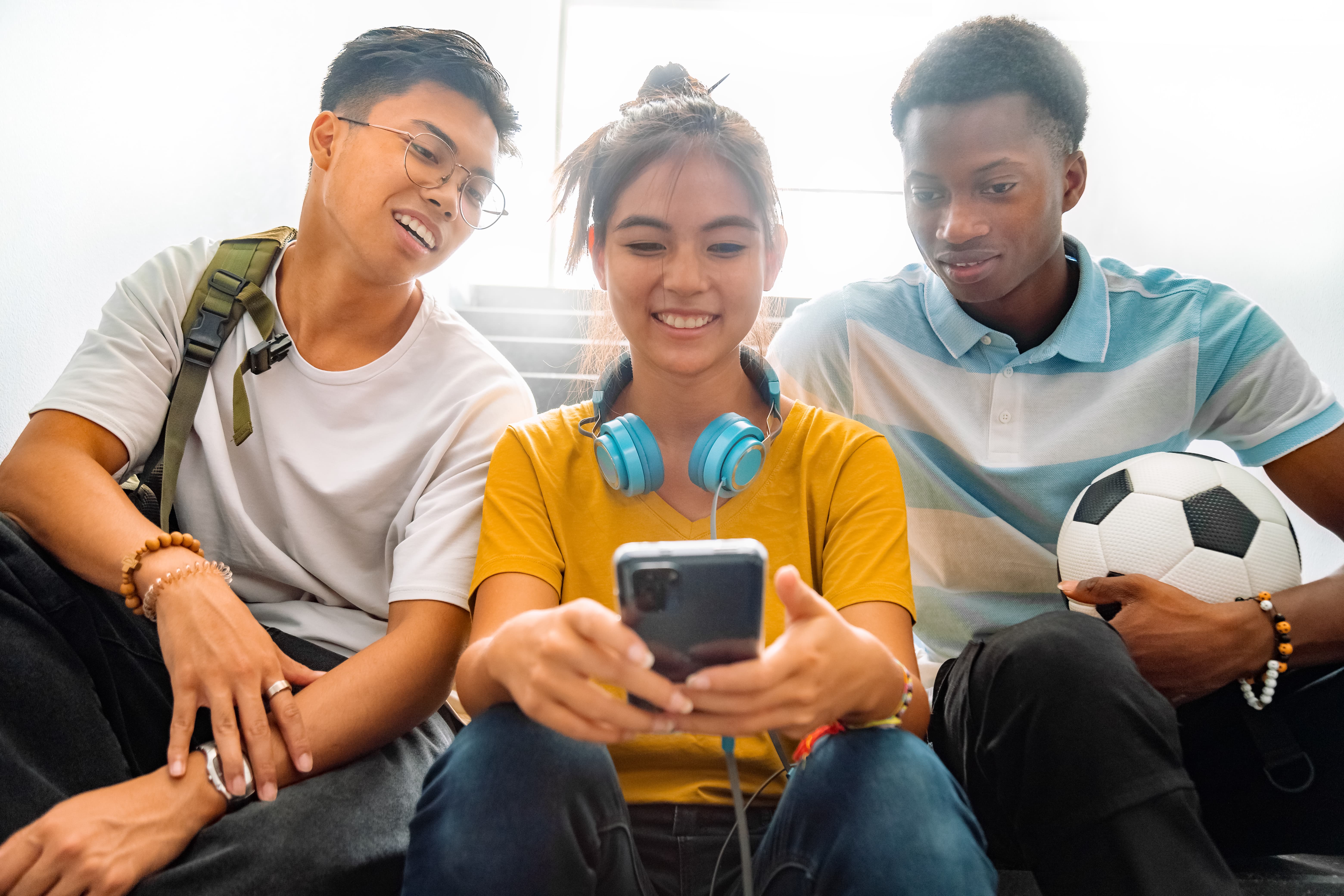 Jul 29th, 2021
Jul 29th, 2021Analyzing the Impact of Mahanoy Area School District v. B.L.: What the recent “Cheerleader Case” Decided by the Supreme Court Means for School Districts
In a previous update, we discussed a legal case that has been billed as the most important student speech case in more than half a century: Mahanoy Area School District v. B.L. More than fifty years ago, the United States Supreme Court famously declared that students do not “shed their constitutional rights to freedom of speech or expression at the schoolhouse gate.” Tinker v. Des Moines Independent Community School District, 393 U.S. 503 (1969). Yet the Supreme Court cautioned that those rights must be interpreted considering the “special circumstances of the school environment.” In Tinker, the Supreme Court recognized that students’ constitutional guarantee of freedom of speech is not unfettered. A student’s conduct, whether in class or out of it, that materially disrupts classwork or involves substantial disorder or invasion of the rights of others is not immunized.
The advent of digital technologies during the past half-century has fundamentally transformed all facets of society, including the educational system. Schools’ sudden implementation of remote learning programs this past year has underscored the ability of schools to connect with students through technology regardless of students’ physical location off-campus. While technology has allowed students and educators to communicate outside of the school campus, school officials have been faced with many challenges in addressing the impact of students’ speech on the school setting. Recognizing these realities, the National School Boards Association urged the Supreme Court to continue the established practice of judicial deference to professional educators and school administrators to address concerns over student speech and its impact on the school setting.
The Mahanoy case involved a Pennsylvania school district’s suspension of a student who took to a social media platform to air her frustration after being passed over for the high school varsity cheerleading team. In this case, the Supreme Court answered the question of whether or not public school officials may regulate online student speech that occurs off-campus. The Court determined that, while public schools have less authority to regulate student speech that occurs off-campus than that which occurs on-campus, schools retain significant interests in regulating off-campus student speech under certain circumstances, including where the speech substantially disrupts the work and discipline of the school.
Facts of the Case
At the end of her freshman year at Mahanoy Area High School, Brandi Levy tried out for her school’s varsity cheerleading team and for an outfielder position on a private softball team. While she did not make the varsity cheerleading team or get her desired position on the softball team, Levy was offered a spot on the junior varsity cheerleading team. Dissatisfied with the results of the team tryouts, Levy resorted to a social media platform to express her frustration. Over the weekend, Levy and a friend visited a local convenience store where Levy posted two Snapchat messages (“Snaps”). The first Snap that Levy posted contained an image of Levy and her friend raising their middle fingers. It bore the caption, “F— school f— softball f— cheer f— everything.” The second Snap contained a message stating “Love how me and [another student] get told we need a year of jv before we make varsity but tha[t] doesn’t matter to anyone else,” apparently referencing the coaches’ decision to place an entering freshman on the varsity cheerleading team. The second Snap was accompanied by an upside-down smiley-face emoji. Notwithstanding the ephemeral nature of Snapchat messages, Levy’s Snapchat posts were recorded by at least one member of the cheerleading team who shared them with other members. In turn, one of the cheerleading team members showed Levy’s Snapchat messages to her mother who was a cheerleading coach. That week, several cheerleaders and other students approached the cheerleading coaches “visibly upset” about Levy’s posts. Levy’s posts were also discussed amongst students during an Algebra class taught by one of the coaches.
Having found that Levy violated both school and team rules regarding the way athletes must conduct themselves, the coaches suspended Levy from the junior varsity cheerleading squad for the year. Levy’s suspension was upheld by the high school principal, athletic director, superintendent, and school board.
Prior Legal Challenges
Levy and her parents filed a lawsuit in federal court, alleging the student’s suspension from the cheerleading team violated the First Amendment. The District Court agreed, initially ordering the school to reinstate Levy to the cheerleading team and subsequently ruling the school overstepped its authority in disciplining Levy because her Snapchat had not caused substantial disruption at the school. The court applied the standard fashioned by the Supreme Court in Tinker v. Des Moines Independent Community School Dist., 393 U.S. 503 (1969) — the seminal case analyzing public school officials’ ability to discipline students for their speech. In Tinker, which involved the suspension of students who wore armbands to school to protest the United States’ involvement in the Vietnam War notwithstanding a resolution banning the wearing of armbands, the Supreme Court found that the students’ wearing of armbands did not cause a material disruption or substantial disorder of school activities. Thus, the Court recognized that schools have a special interest in regulating on-campus student speech that “materially disrupts class-work or involves substantial disorder or invasion of the rights of others.” 393 U.S. at 513. Based on this standard, the federal court declared Levy’s punishment violated the First Amendment, awarded her nominal damages and attorneys’ fees and ordered the school to expunge Levy’s disciplinary record.
The United States Court of Appeals for the Third Circuit affirmed the District Court’s conclusion. The Third Circuit held that schools’ considerable freedom to discipline students for conduct that the First Amendment might otherwise protect did not apply to off-campus speech, which it defined as speech that occurred outside of school-owned, -operated, or -supervised channels and that is not reasonably interpreted as bearing the school’s imprimatur. Essentially creating a “bright-line rule,” the Third Circuit concluded the Tinker standard did not apply to off-campus speech. Consequently, the school could not discipline Levy because the student’s speech occurred off- campus.
The school district asked the Supreme Court to review the case and decide whether public school officials may regulate off-campus speech that would materially and substantially disrupt the work and discipline of the school. The school district, which was supported by the National School Boards Association, argued among other things that if schools may discipline students for speech that is disruptive only when it occurs on campus or in a school-sponsored setting, schools would be unable to address discrimination and bullying. The Supreme Court agreed to hear the case, which is the first that has considered the constitutionality of a public school’s attempt to regulate true off-campus student speech.
The case has raised difficult issues concerning the relationship between public school students’ free speech rights and school districts’ need to regulate conduct that may disrupt the school environment, including a schools’ obligation to comply with federal and state laws that require them to address speech that is harassing to other students or staff.
The United States Supreme Court Decision
On June 23, 2021, the Supreme Court issued its much-anticipated decision in Mahanoy. In an 8-1 majority opinion written by Justice Breyer, the Court held that “although public schools may have a special interest in regulating some off-campus speech, the special interests offered by [the school district] are not sufficient to overcome [the student’s] interest in free expression in this case.” The Court rejected the Third Circuit’s categorical rule prohibiting public schools from regulating off-campus speech. Rather, the Court clarified the application of Tinker beyond school grounds based on the effect, rather than the geographical location, of the speech.
The Supreme Court reviewed its prior precedent in which it outlined three circumstances in which public schools may regulate speech: (1) indecent, lewd or vulgar speech uttered during a school assembly or on school grounds; (2) speech uttered during a class trip promoting illicit drug use; and (3) speech that others may perceive as bearing the imprimatur of the school, such as a school newspaper. The Court recognized a “school’s regulatory interests remain significant in some off-campus circumstances.” While it declined to provide an exhaustive list of circumstances in which students’ off-campus speech rights under the First Amendment give way to schools’ need to prevent harm, the Court identified circumstances in which schools may regulate off-campus speech: (1) serious or severe bullying or harassment targeting particular individuals; (2) threats aimed at teachers or other students; (3) the failure to follow rules concerning lessons, the writing of papers, the use of computers, or participation in other online school activities; and (4) breaches of school security devices, including material maintained within school computers.
The Court identified several features of off-campus speech that “diminish the strength” of the schools’ position speech can be regulated despite the First Amendment, including (1) parental responsibility for their children’s off-campus conduct; (2) the concern that students would enjoy no First Amendment protection if students’ speech, particularly political or religious speech, was unduly restricted by regulation 24 hours a day; and (3) the interest of public schools – as “nurseries of democracy” – in protecting unpopular speech.
In ruling that the school district improperly disciplined Levy, the Supreme Court found the school’s interest in teaching good manners was not sufficient to overcome the student’s interest in free expression and the school’s interest in preventing disruption of the school’s efforts to maintain cohesion on the cheerleading team was not supported by the facts of this case where the student’s social media posts were sent outside of school hours and off-campus and did not identify the school or target any particular person.
Implications of Mahanoy for School Boards and Administrators
While the Supreme Court acknowledged future litigation will be necessary to determine the specific contexts in which students’ off-campus speech may be regulated by school districts, the opinion provided some framework for school districts to regulate off-campus student speech. Many in education have lauded the Court’s opinion for preserving public schools’ authority to regulate off-campus student speech in certain circumstances, including conduct that constitutes bullying or harassment targeting individuals. However, the Mahanoy opinion makes clear that the characteristics of off-campus speech that distinguish it from speech at school or a school-related function require school districts to employ a higher standard in determining whether students can be the subject of discipline for speech that occurs outside of school. Schools must evaluate each situation on a case-by-case basis. School administrators and school boards must analyze the specific characteristics of students’ off-campus speech, as well as the impact of the speech, in determining whether and how to respond to the speech.
The required analysis regarding the regulation of off-campus speech is very dependent upon context and effect. Please reach out to our office for assistance with any off-campus speech issues that may arise.



